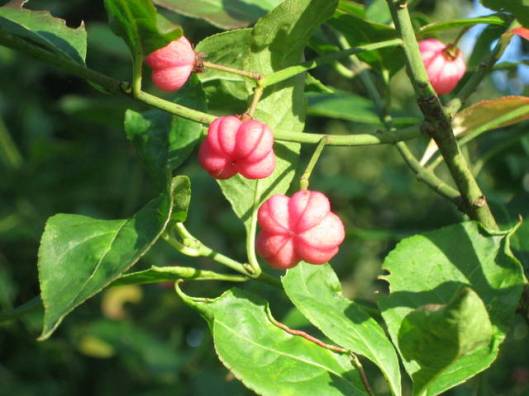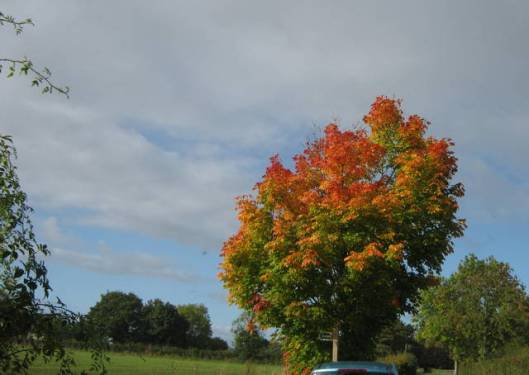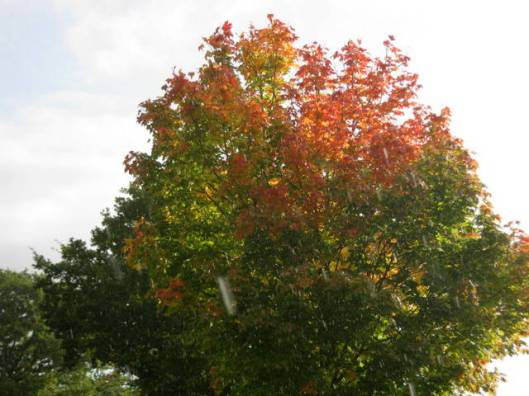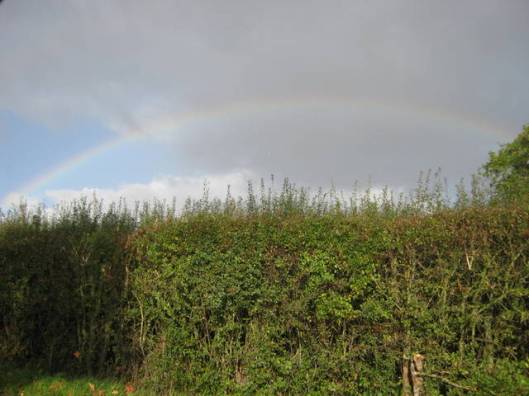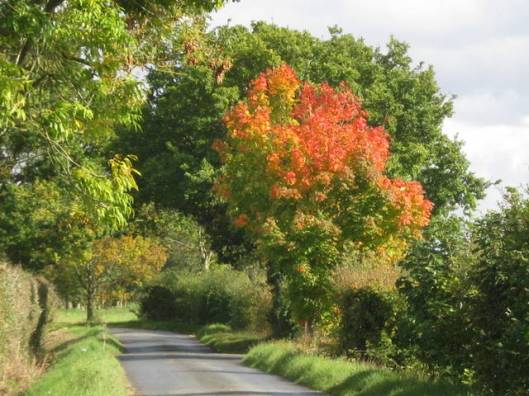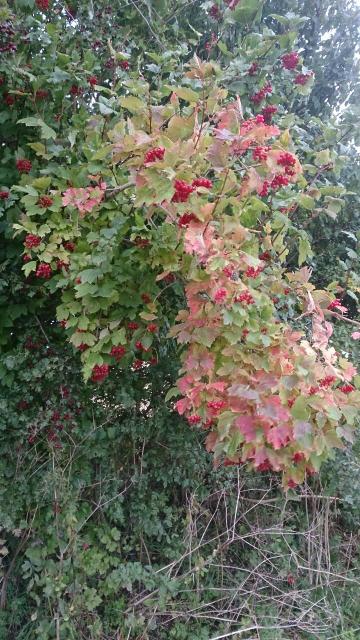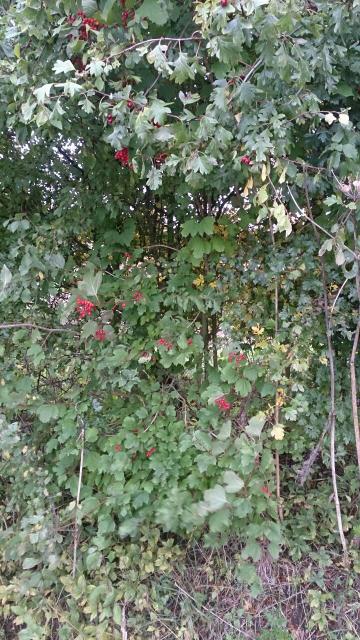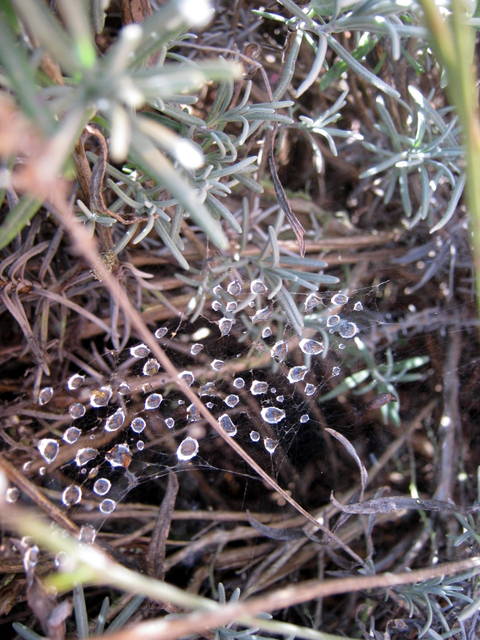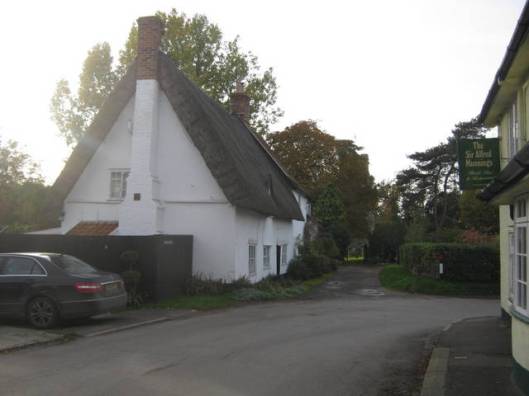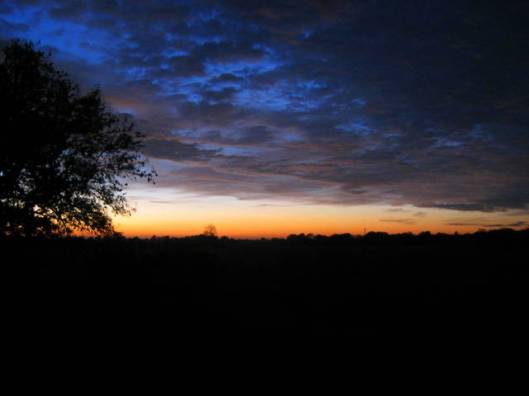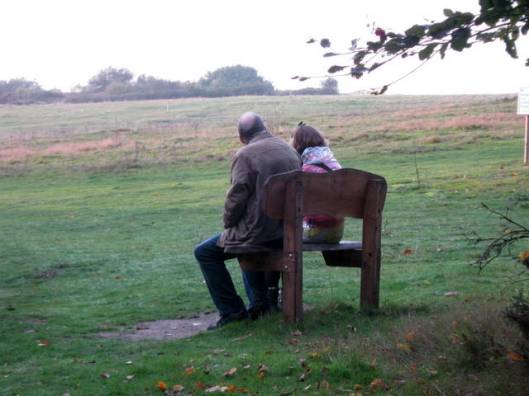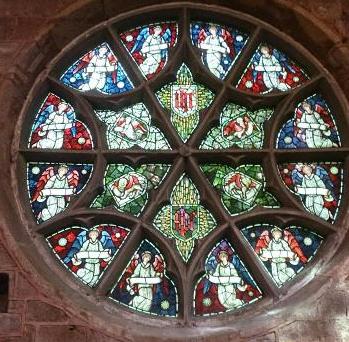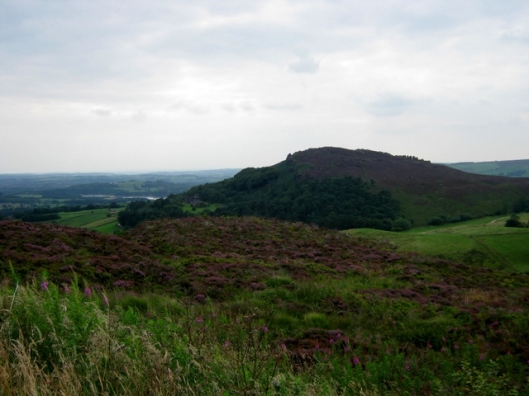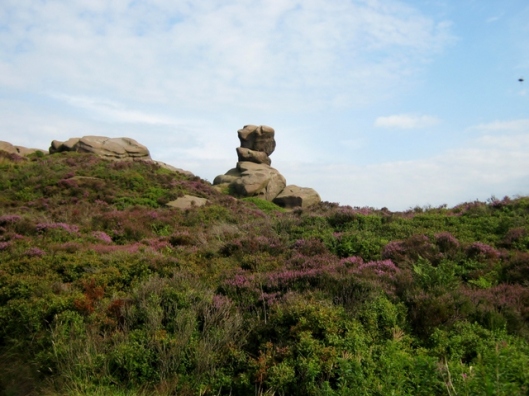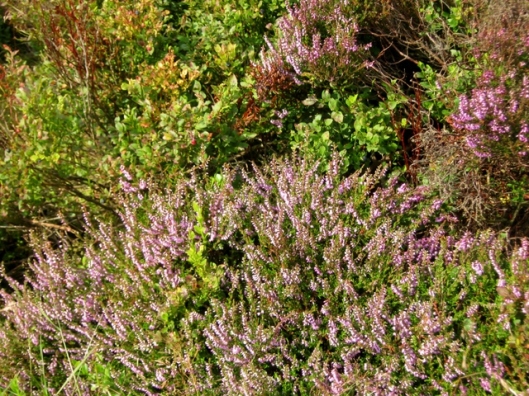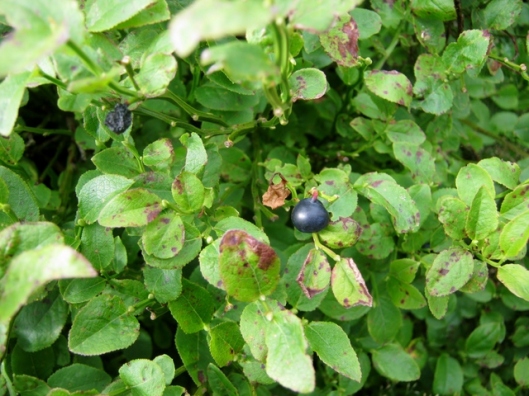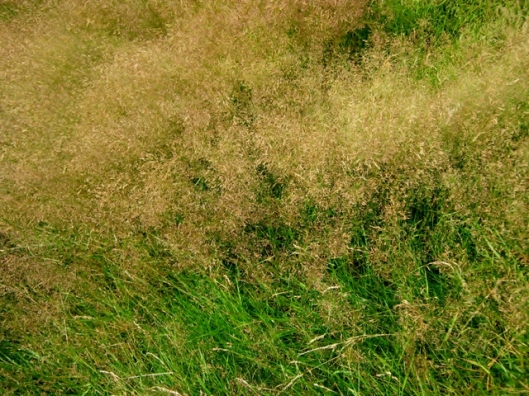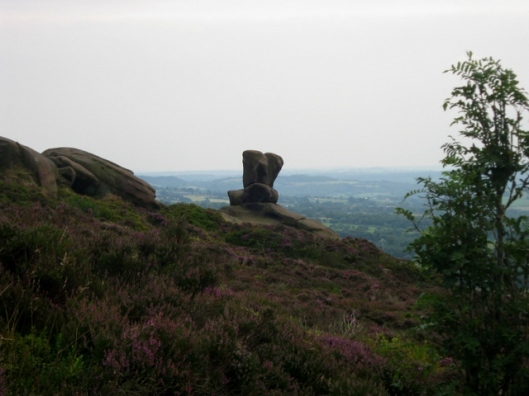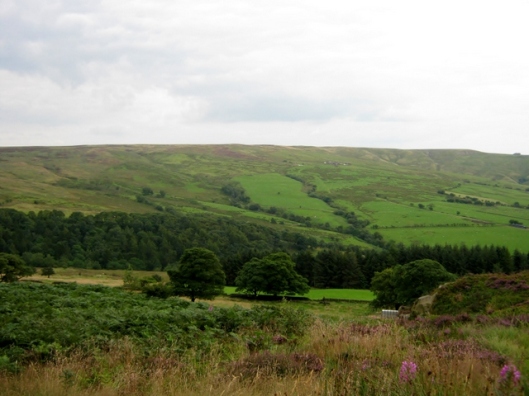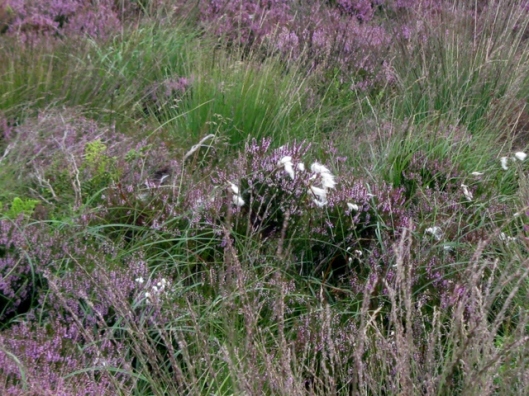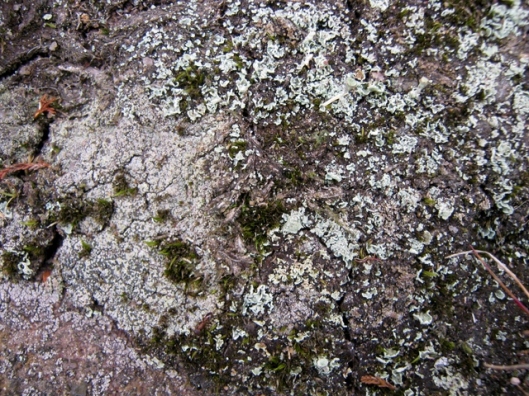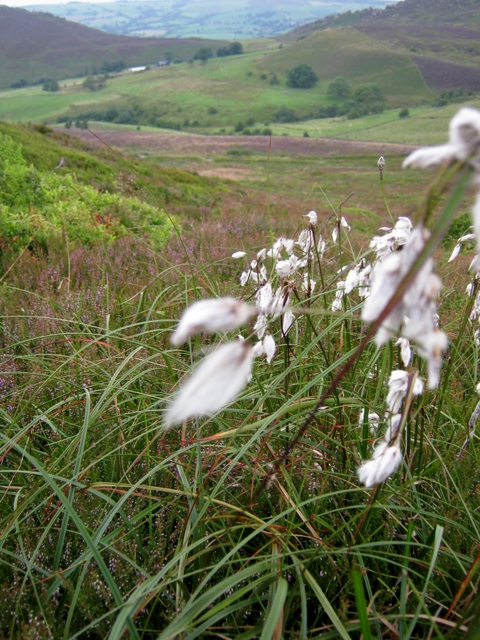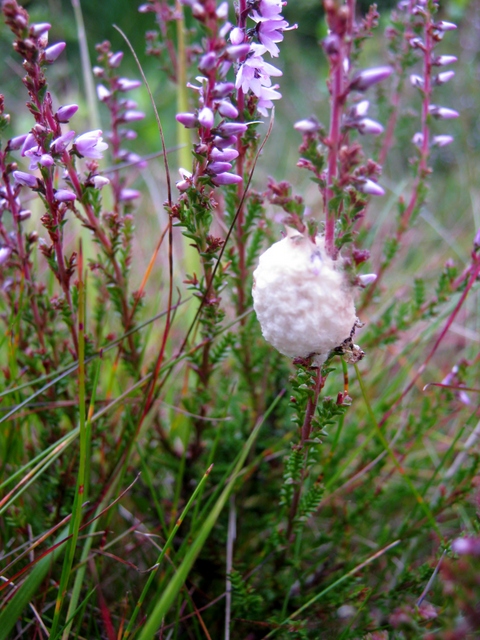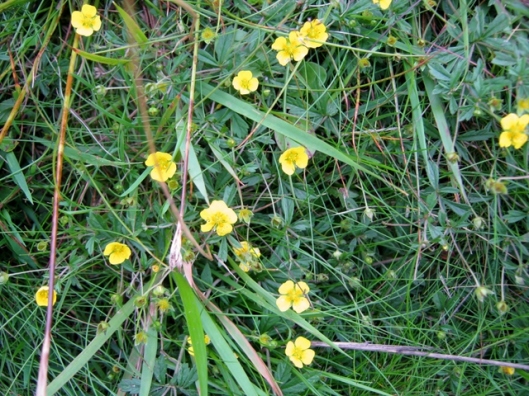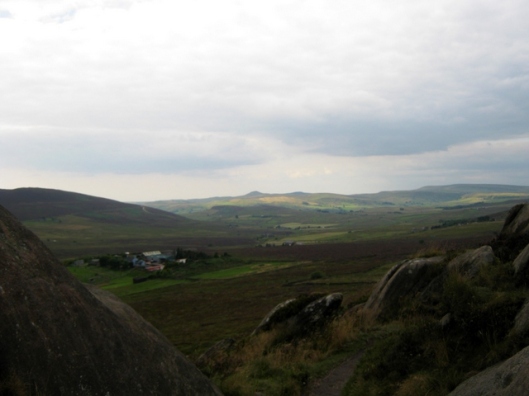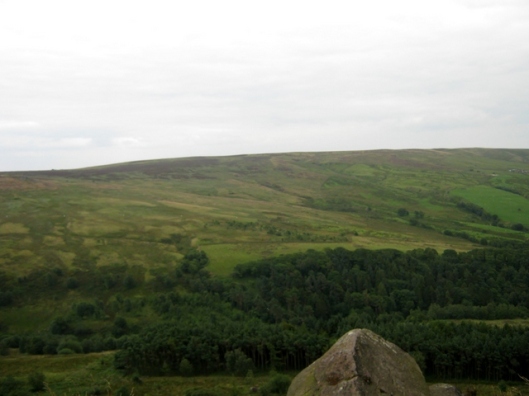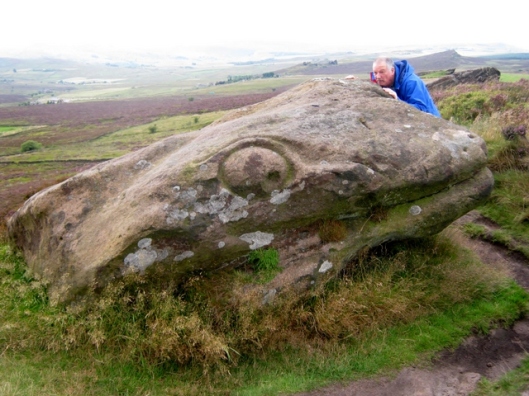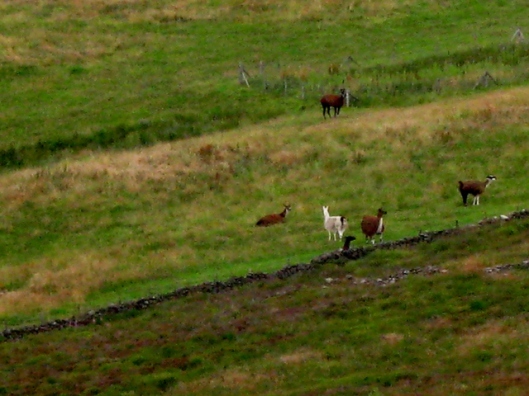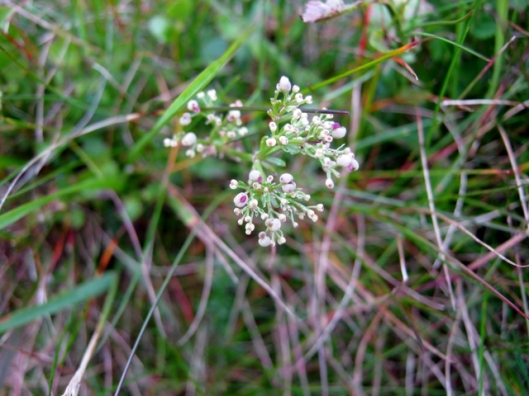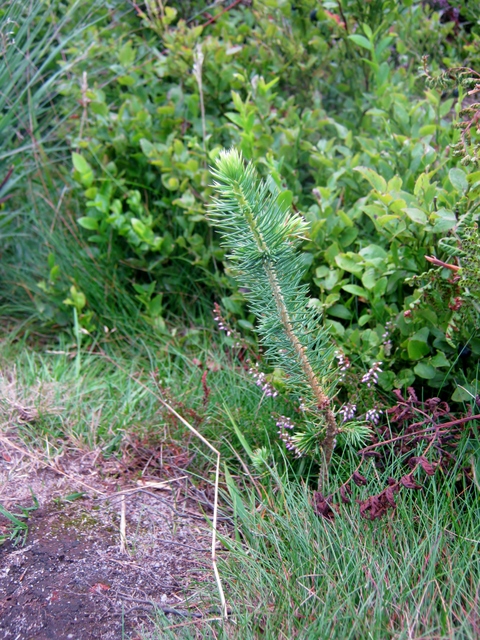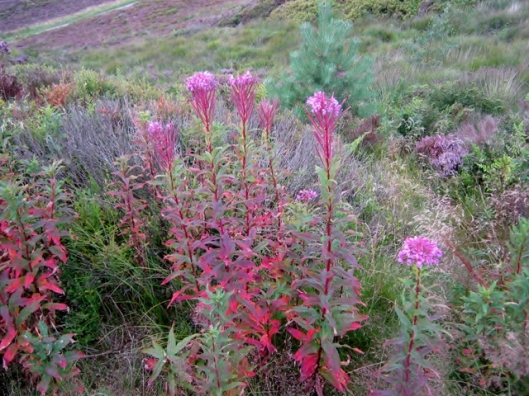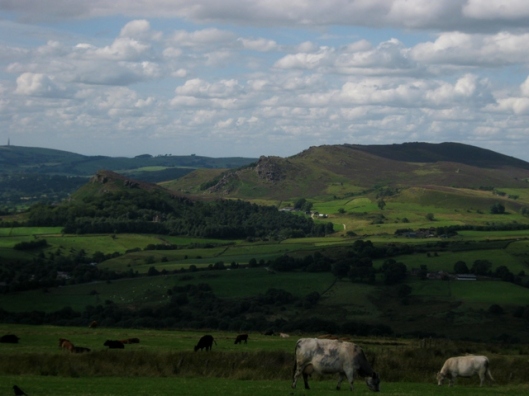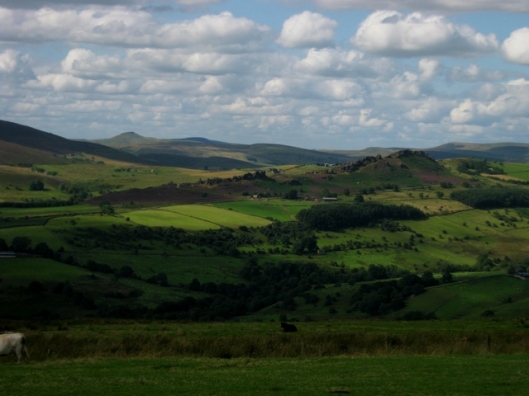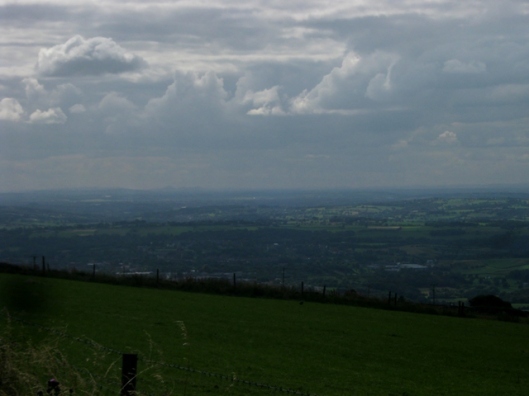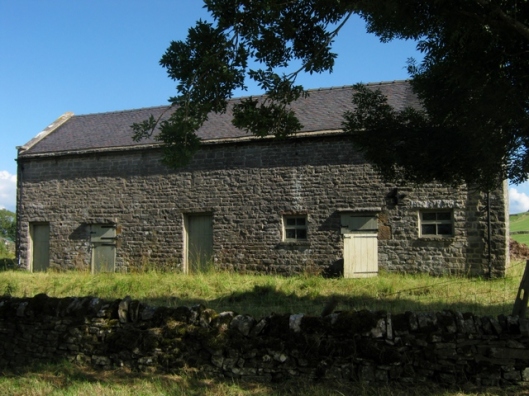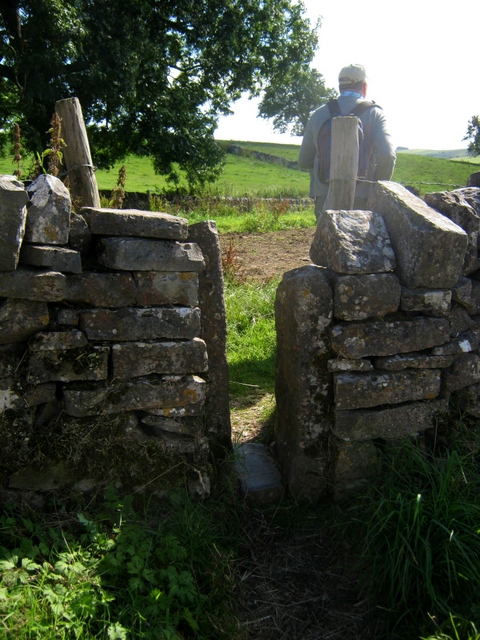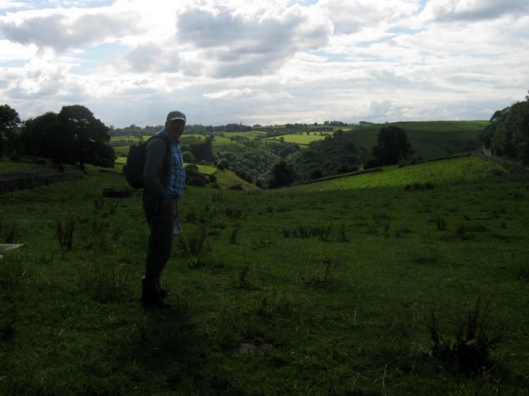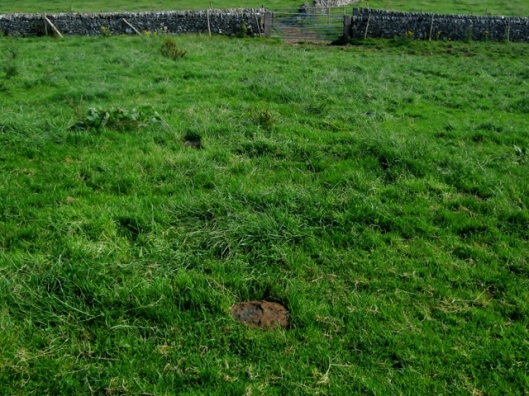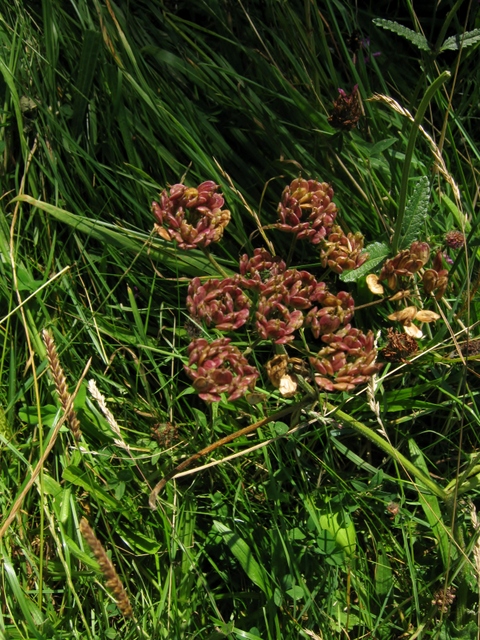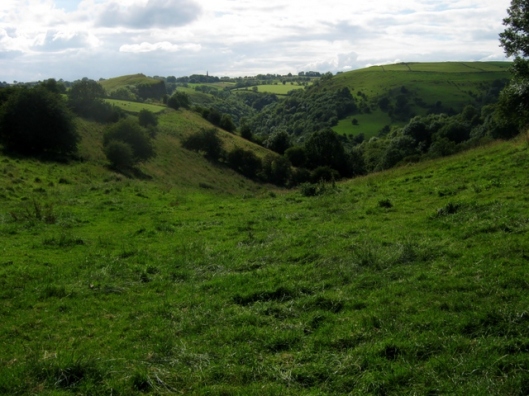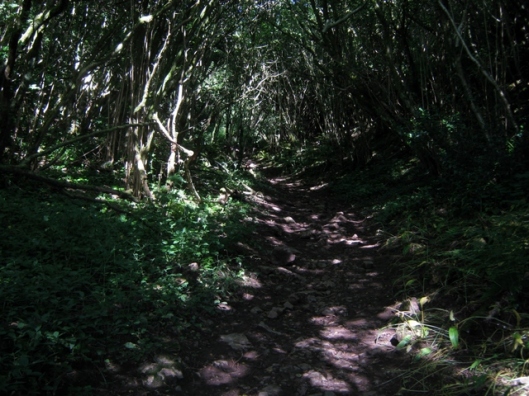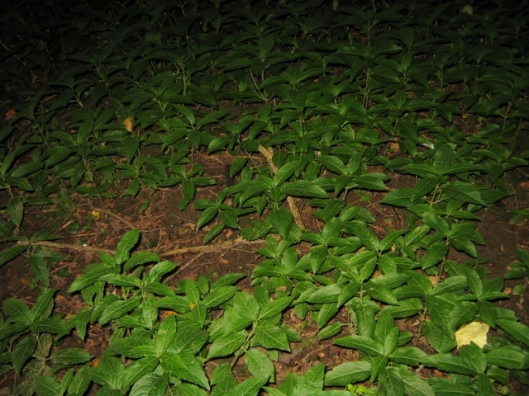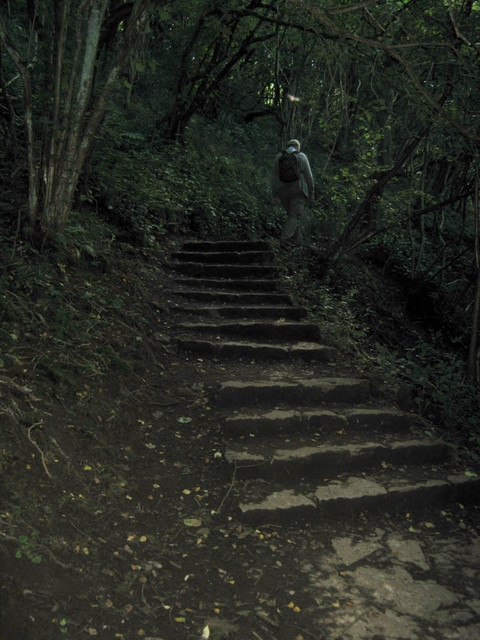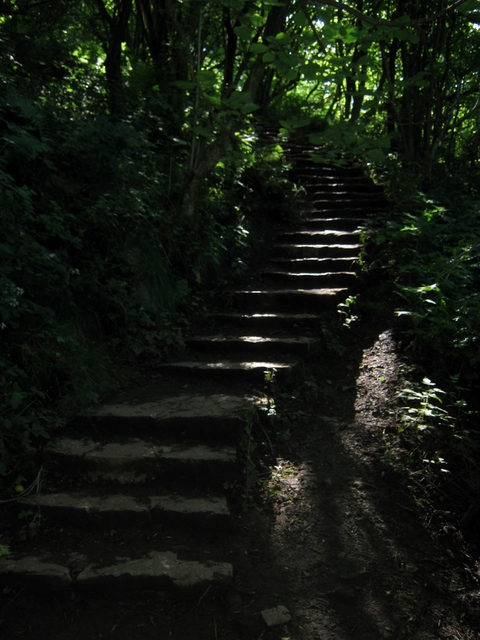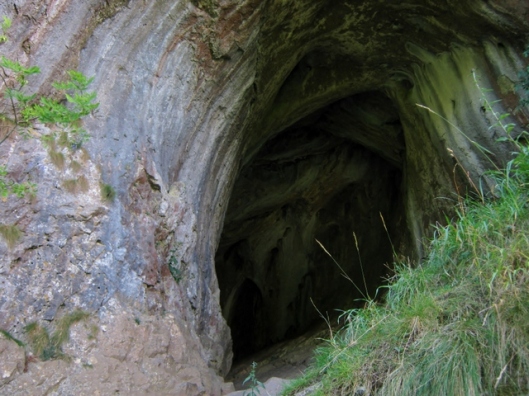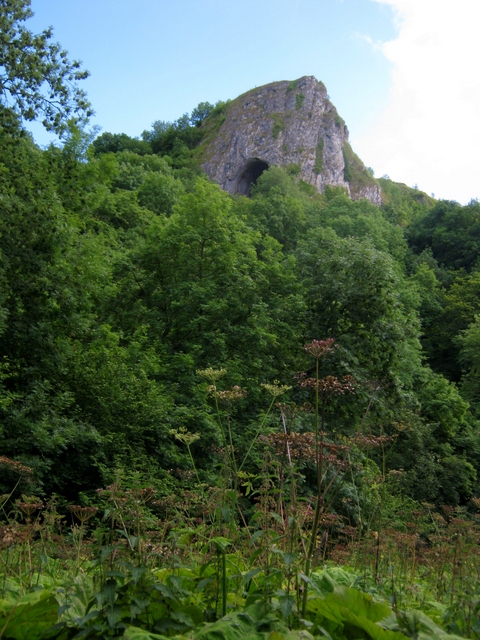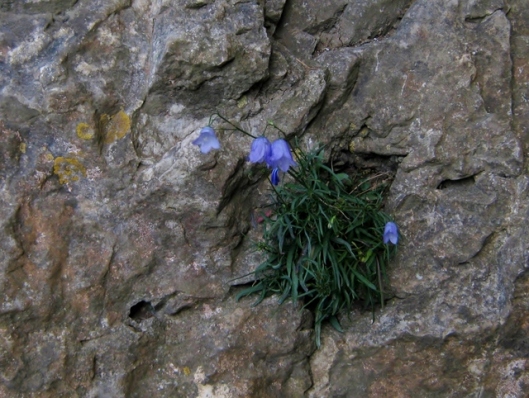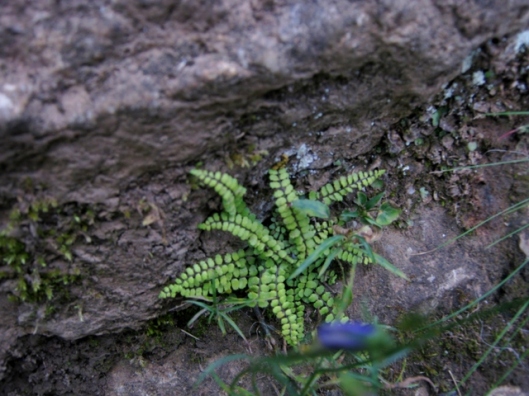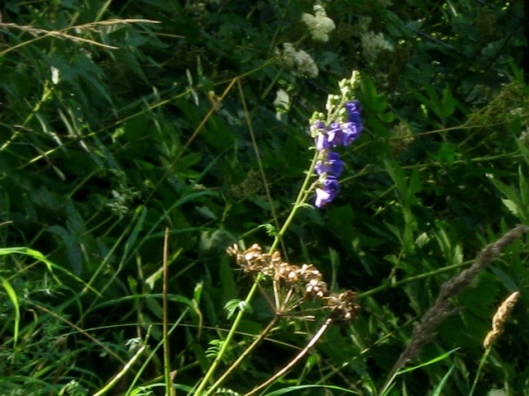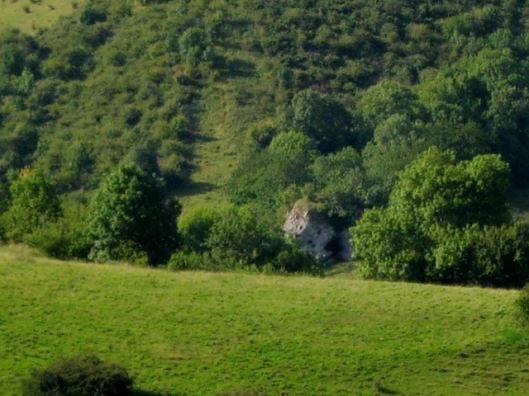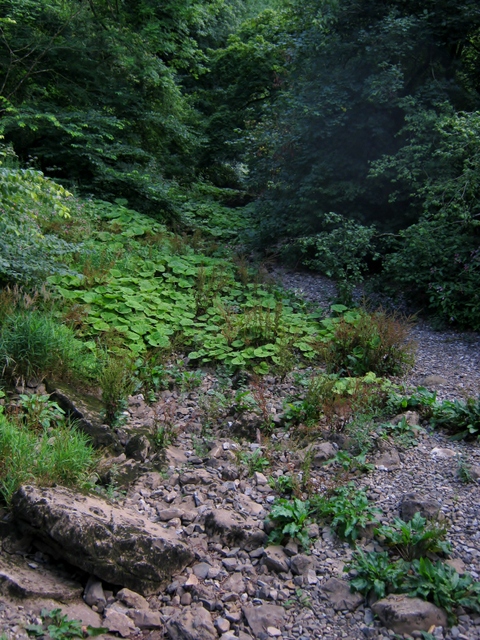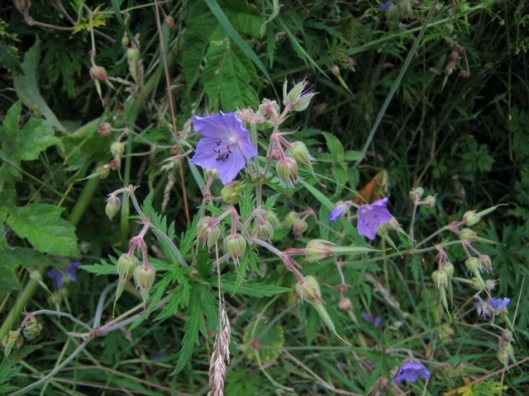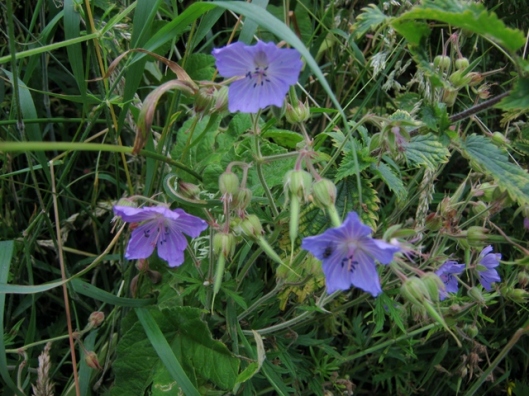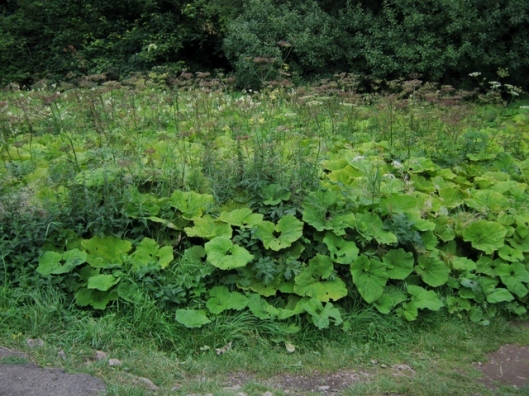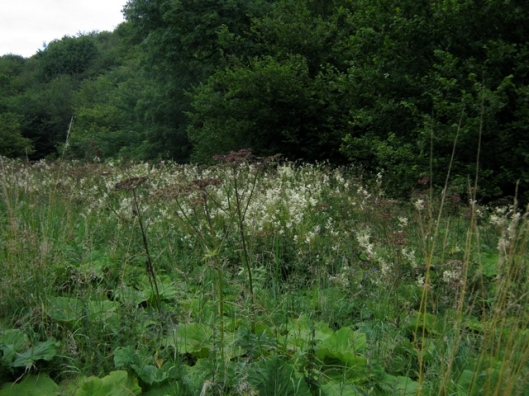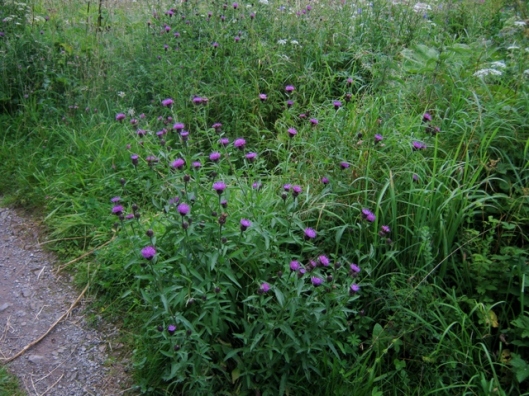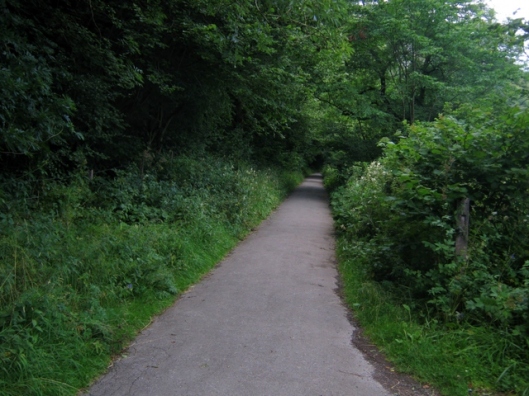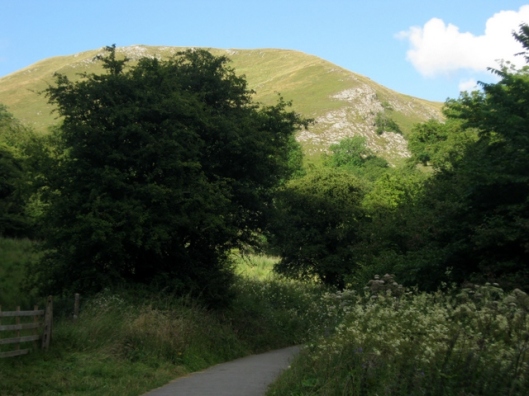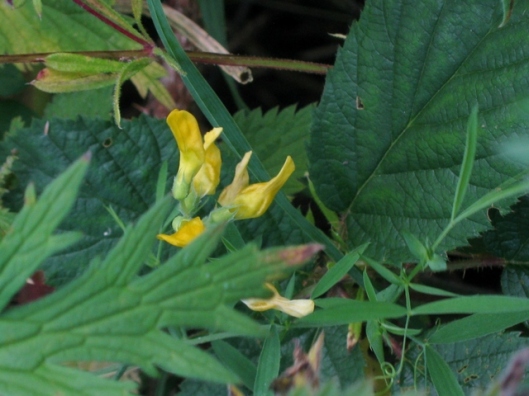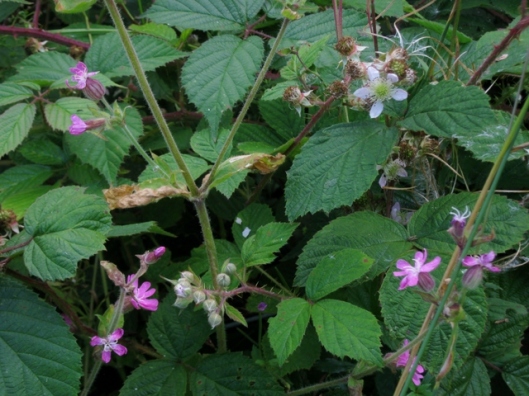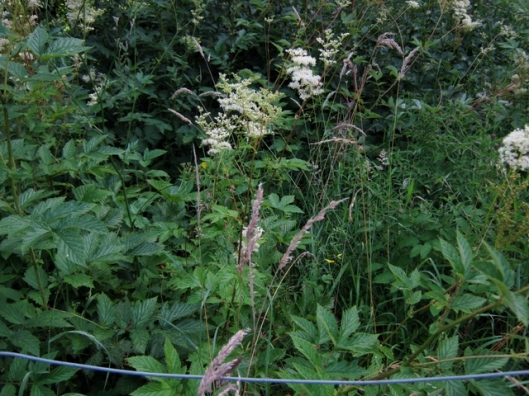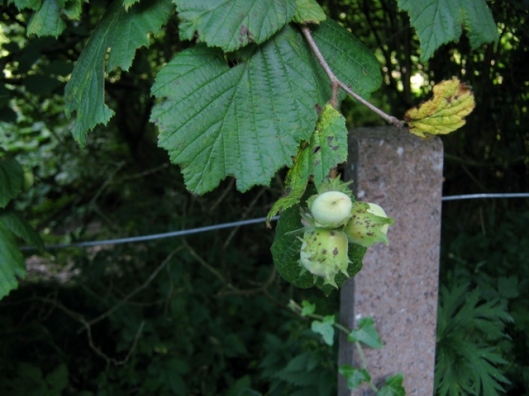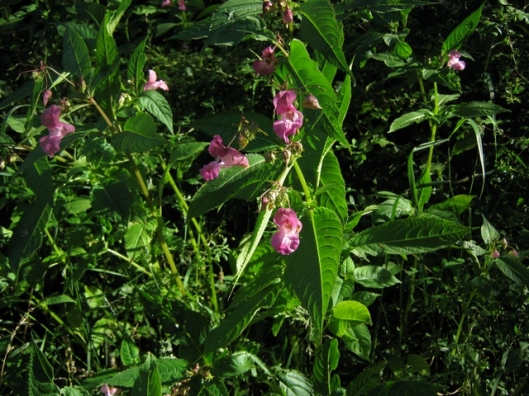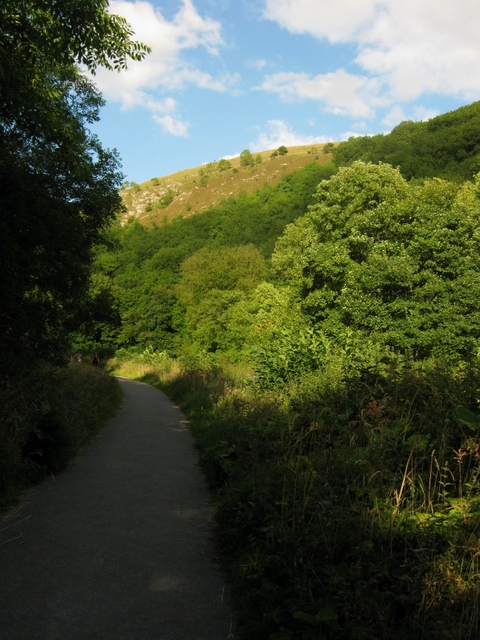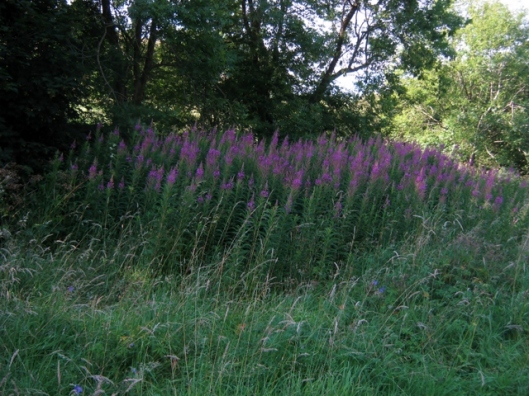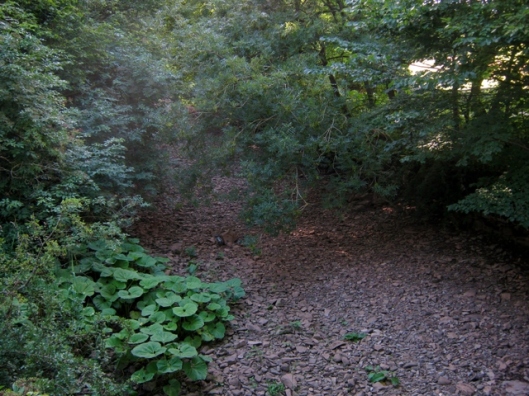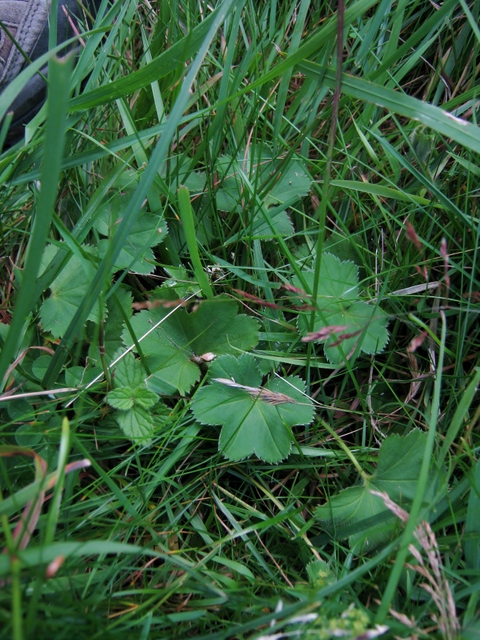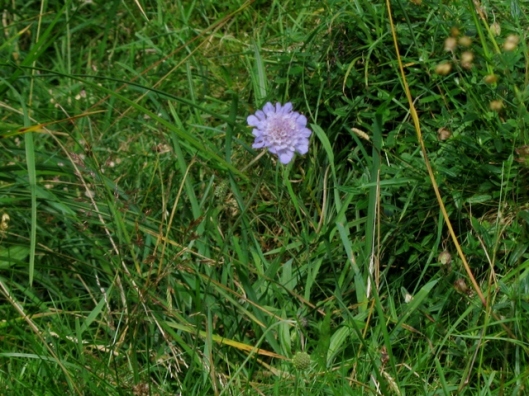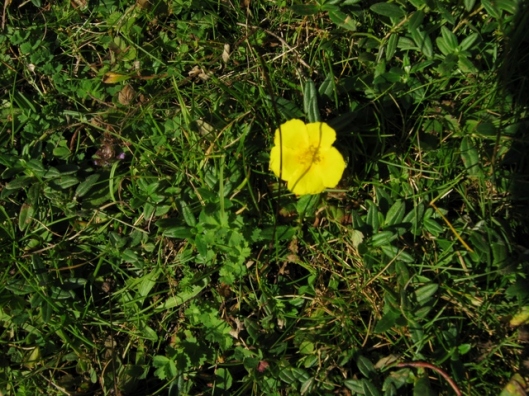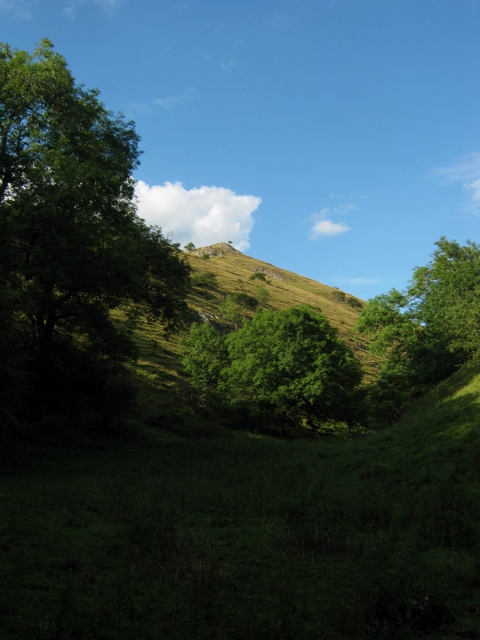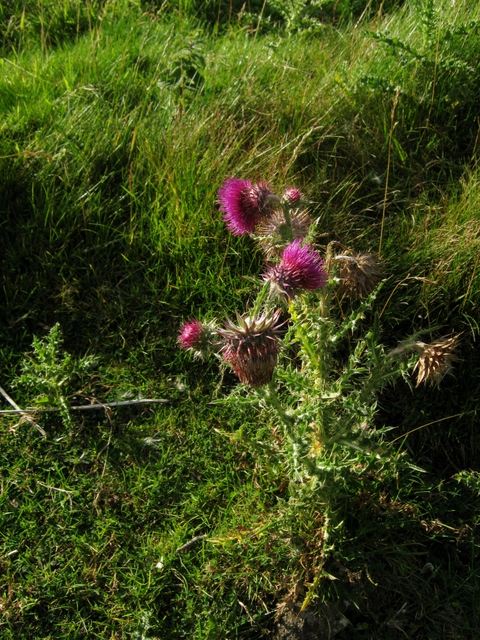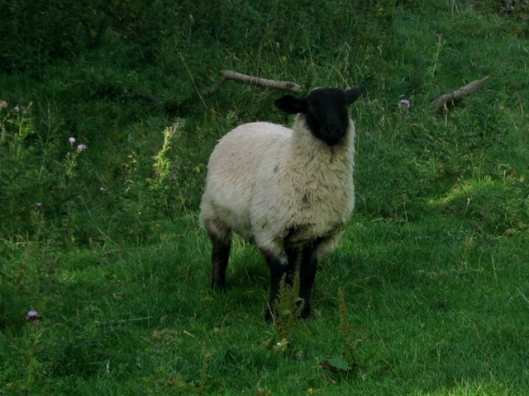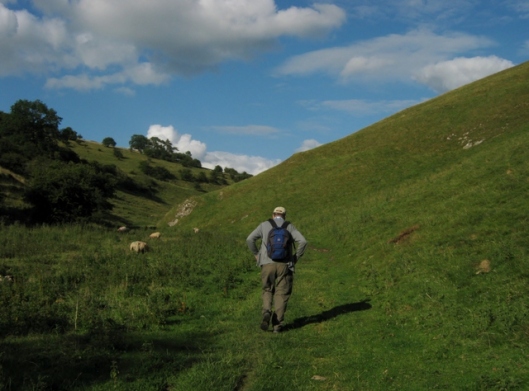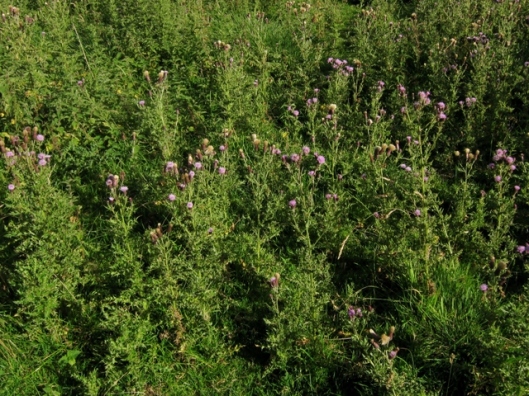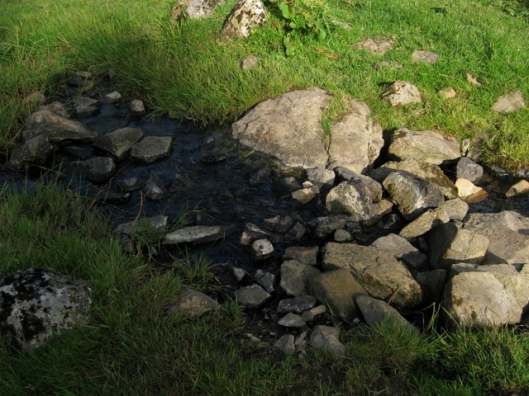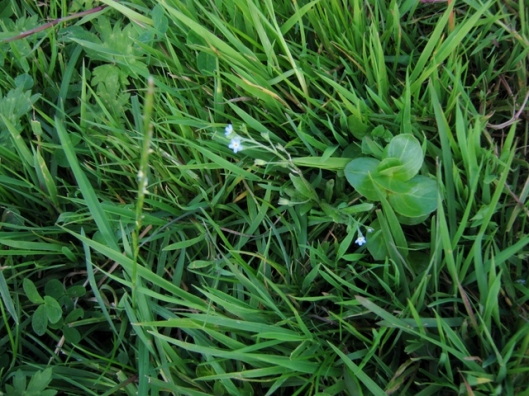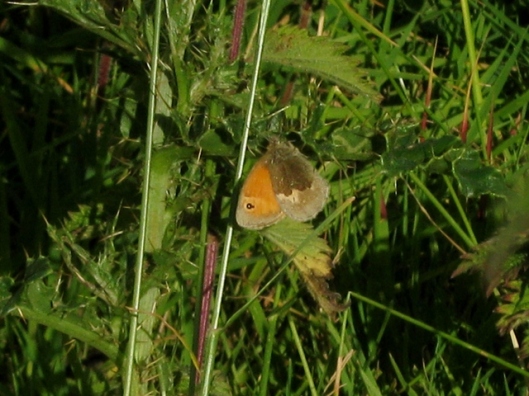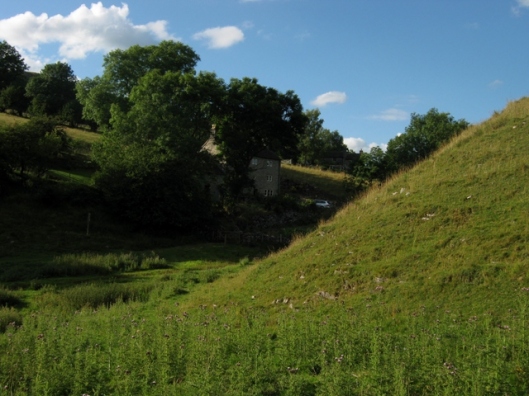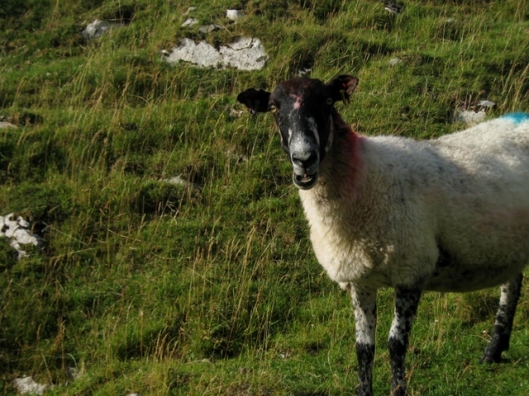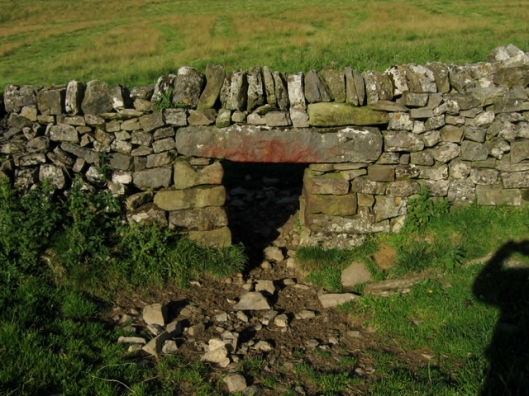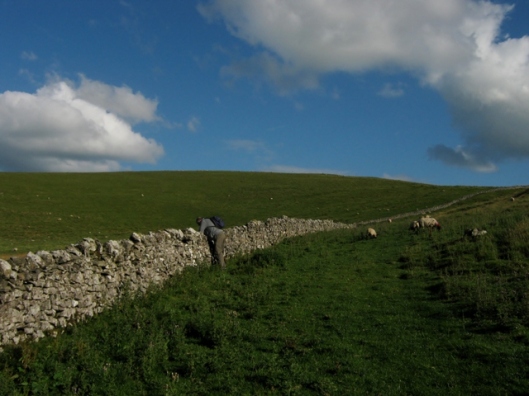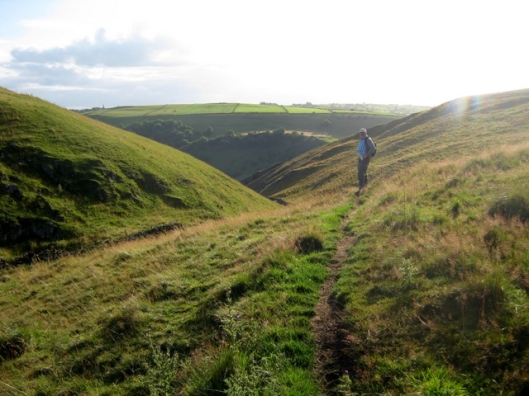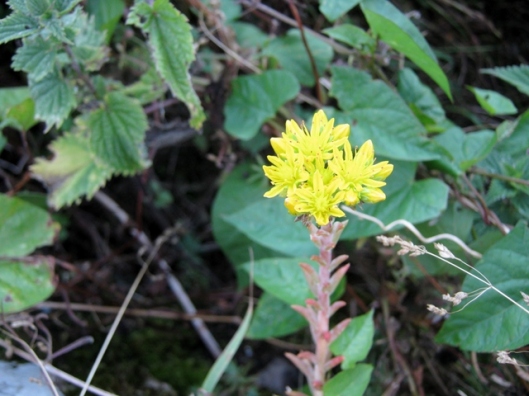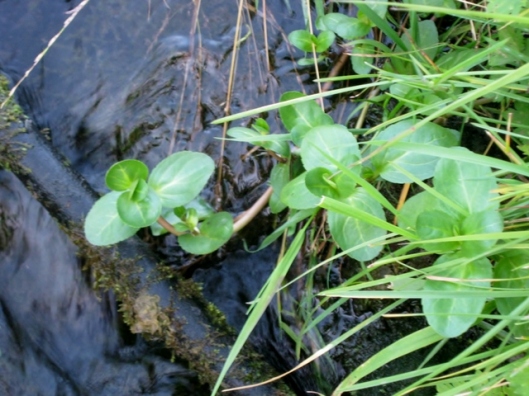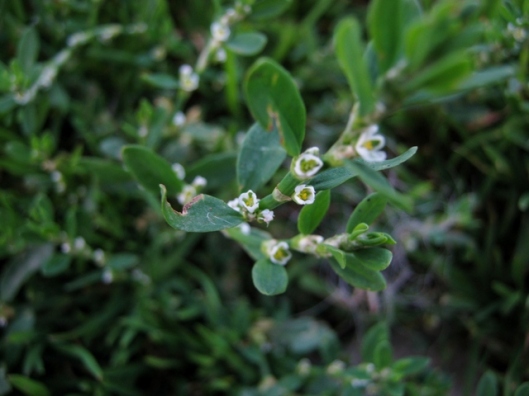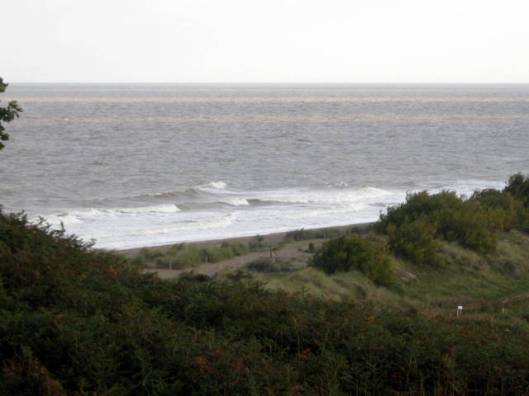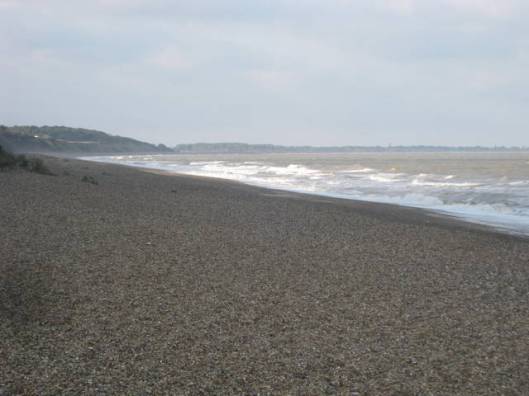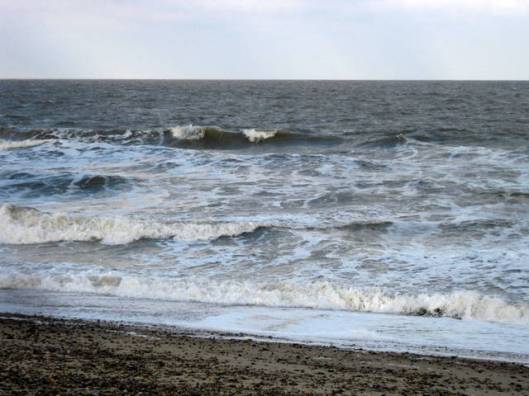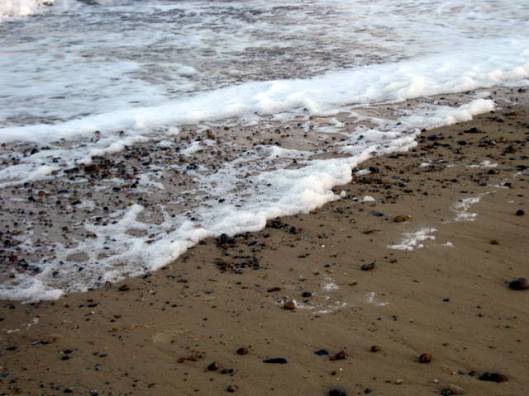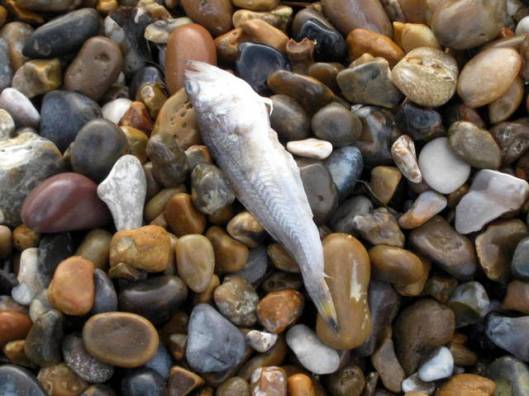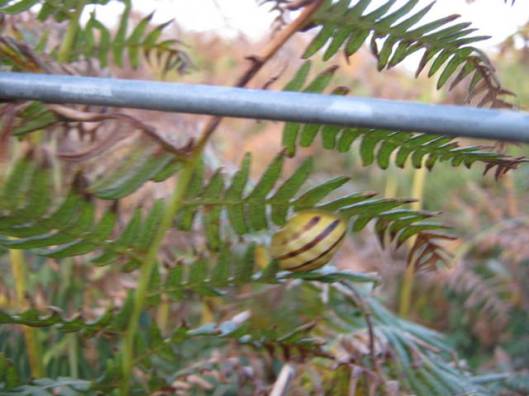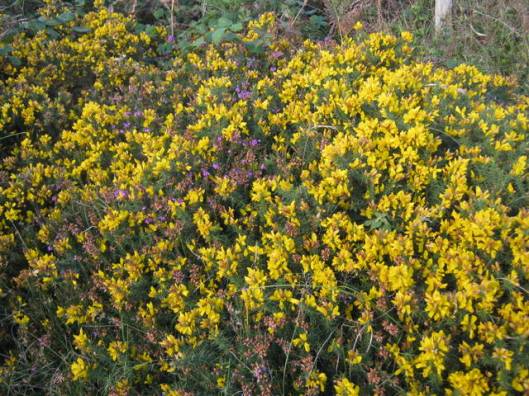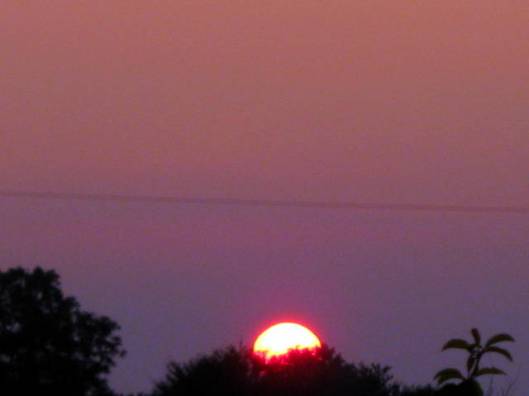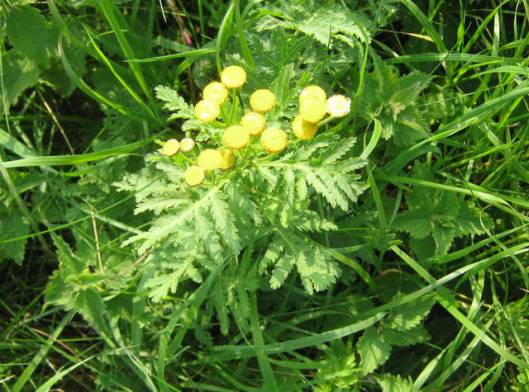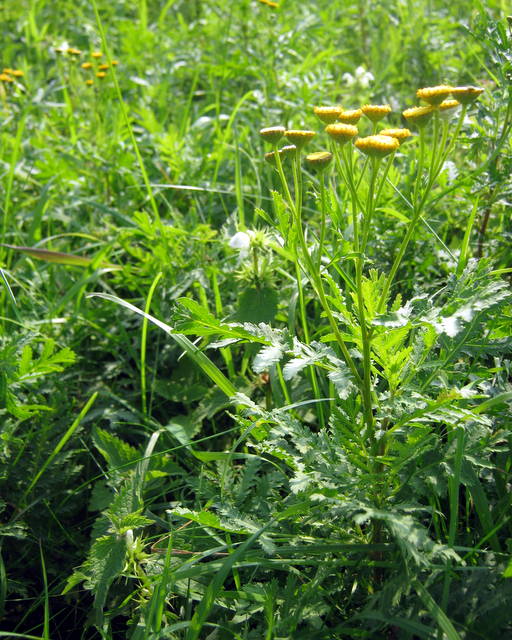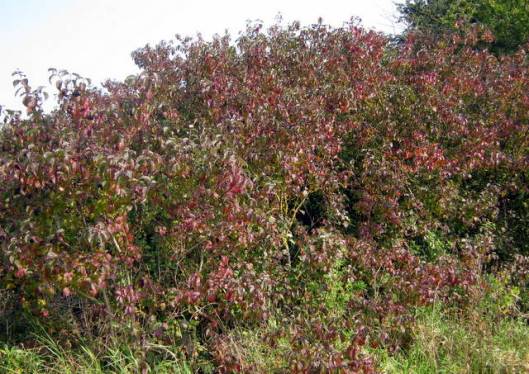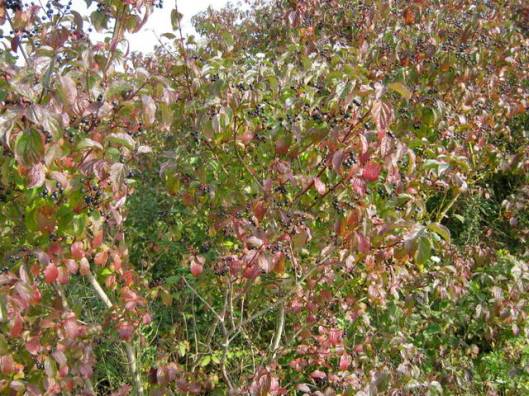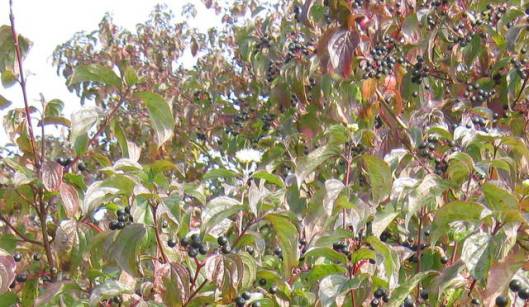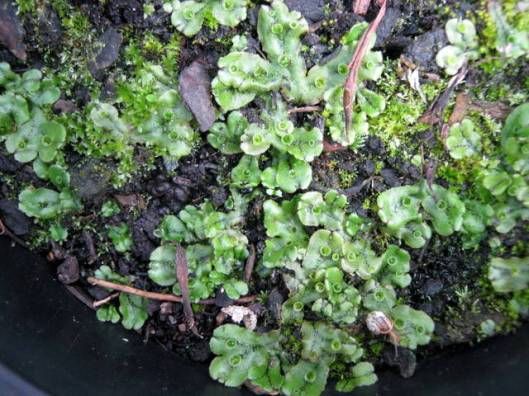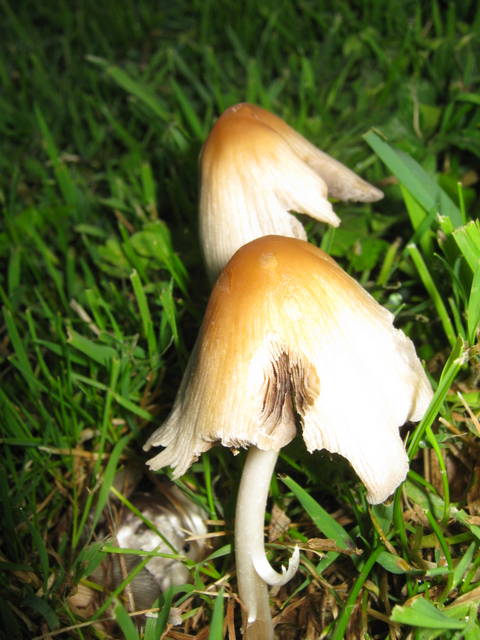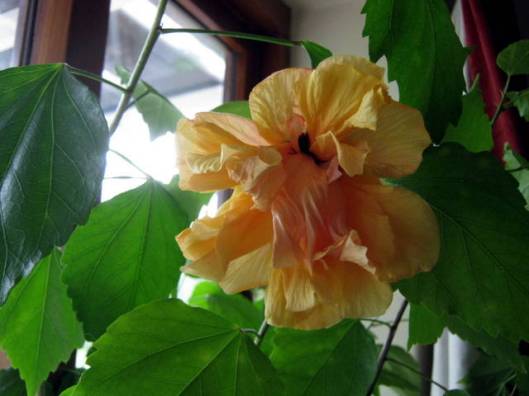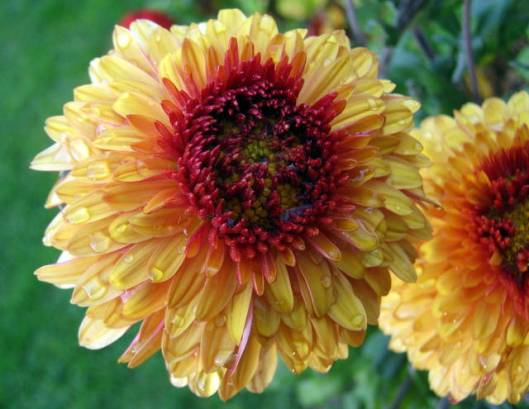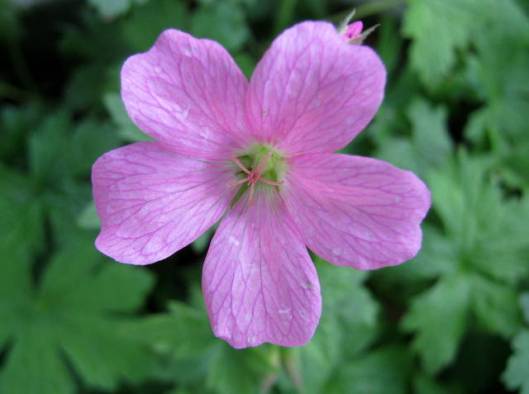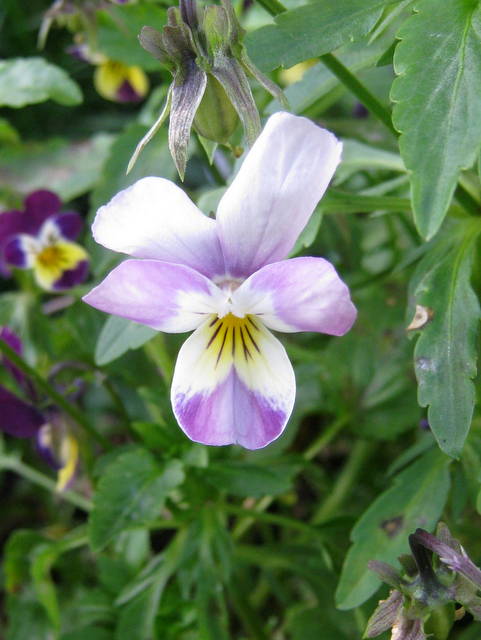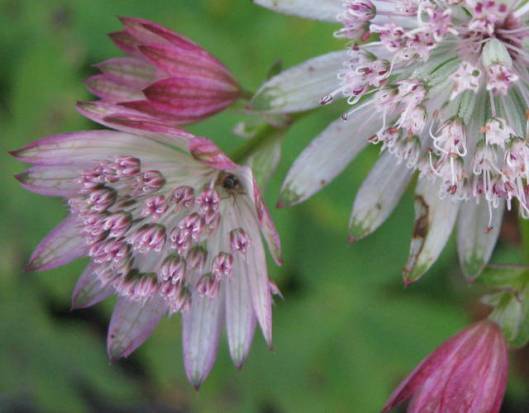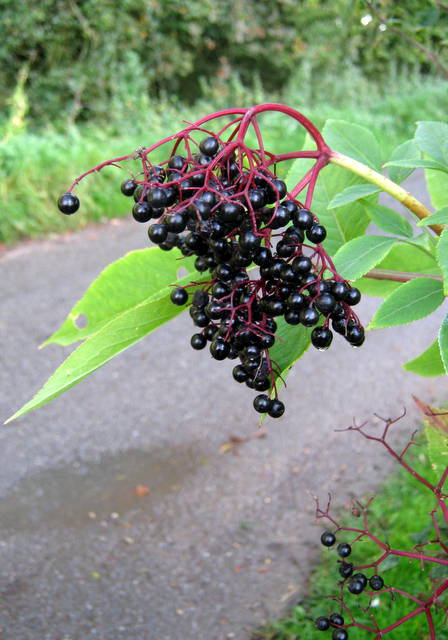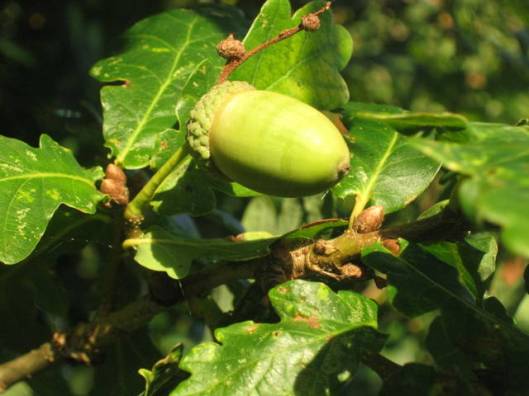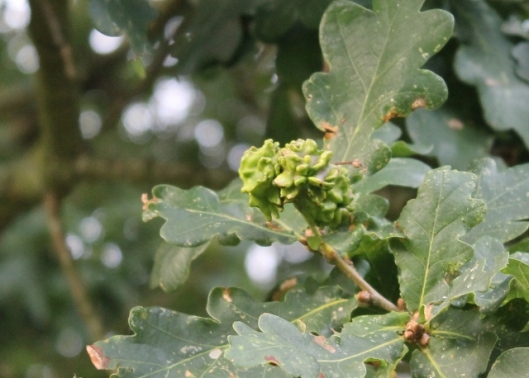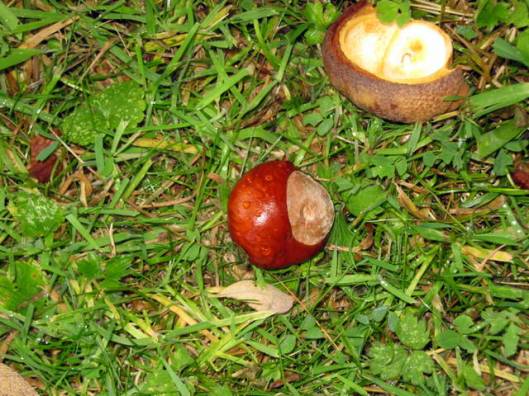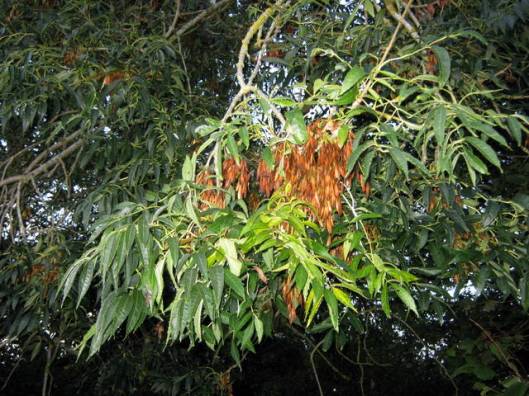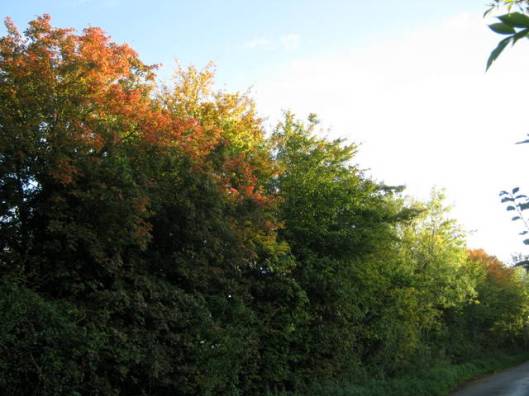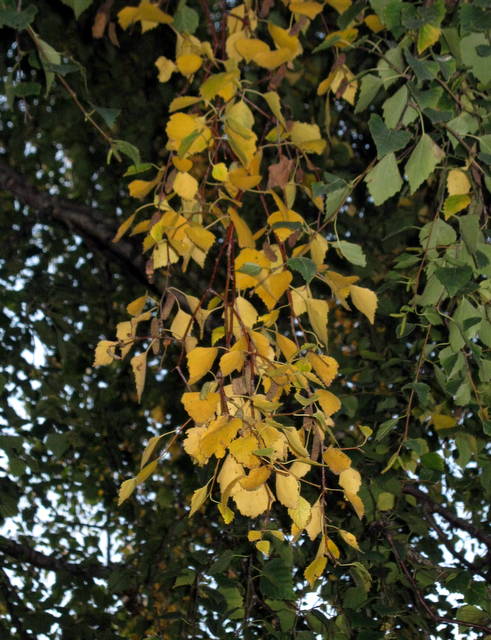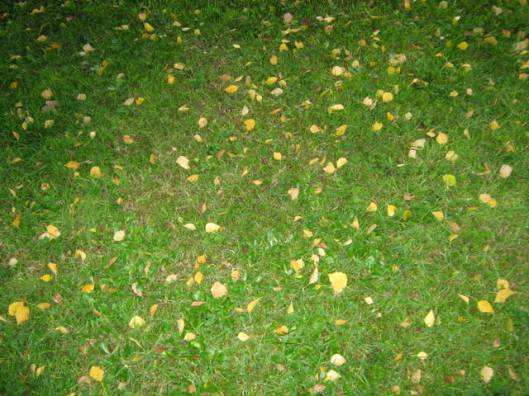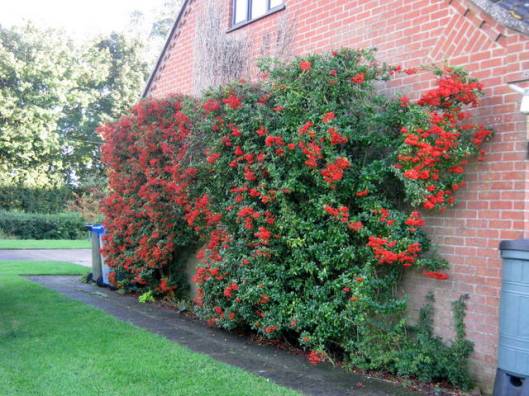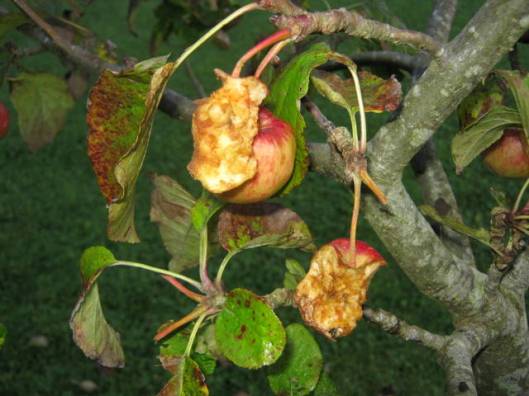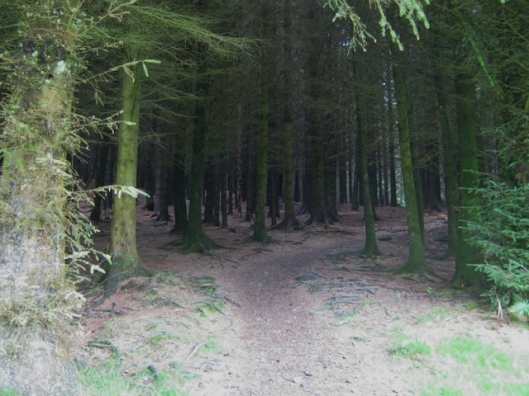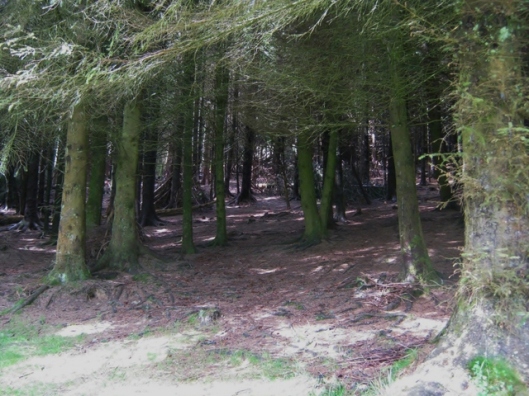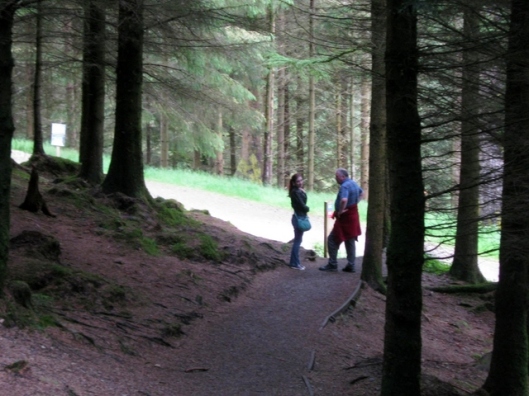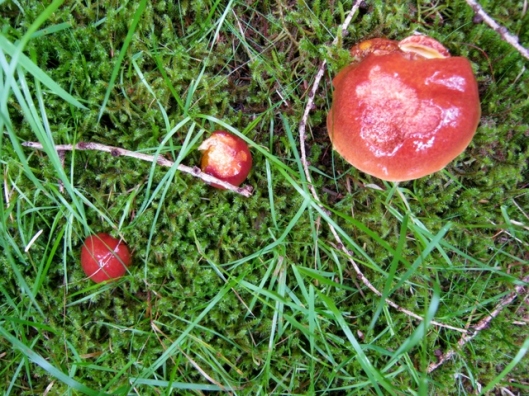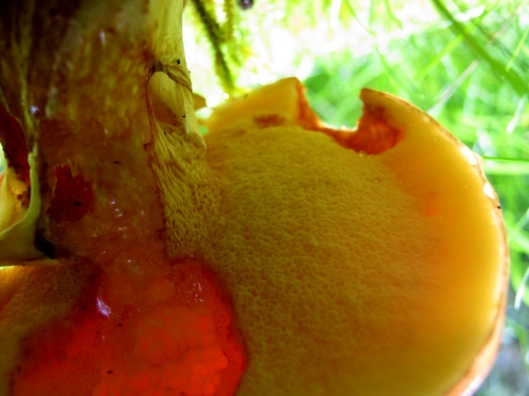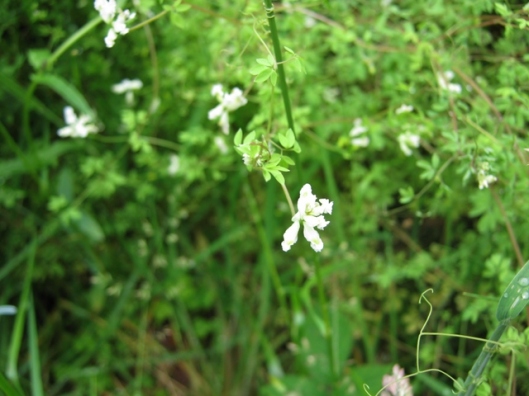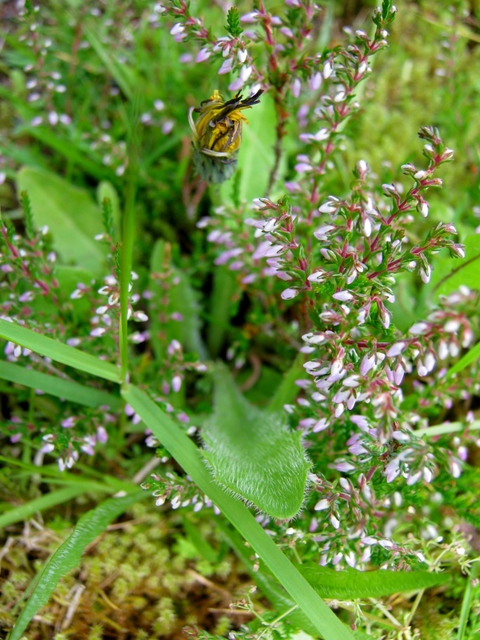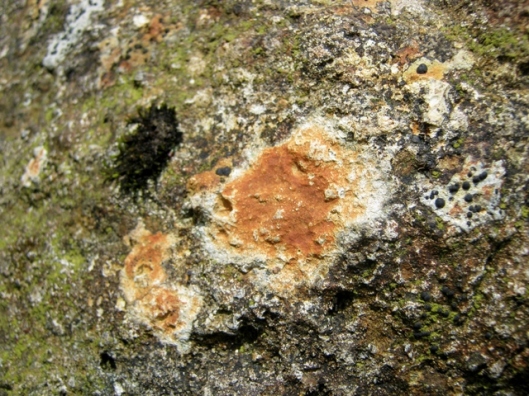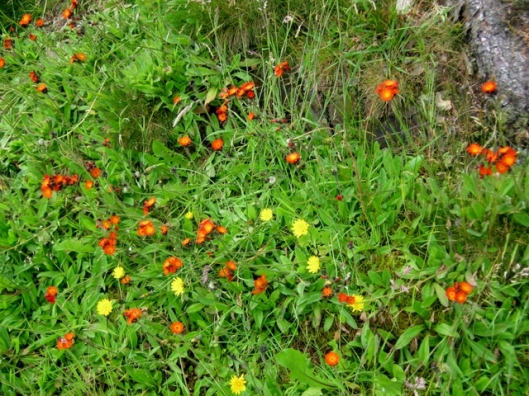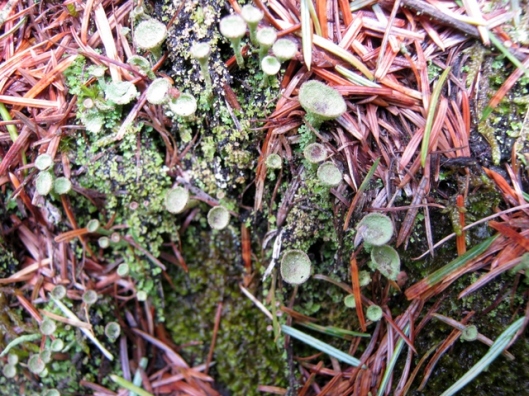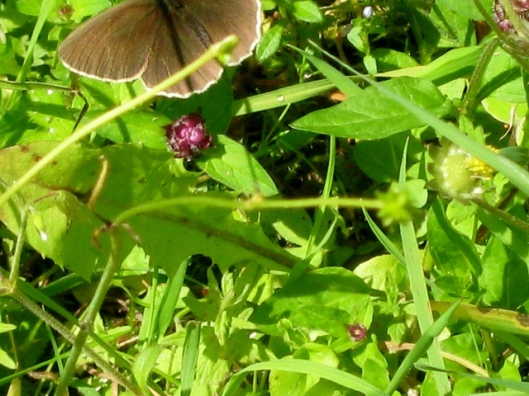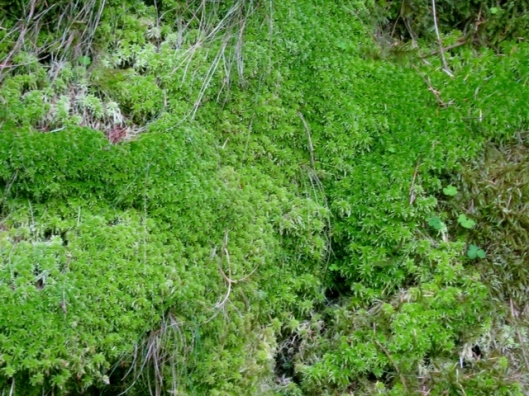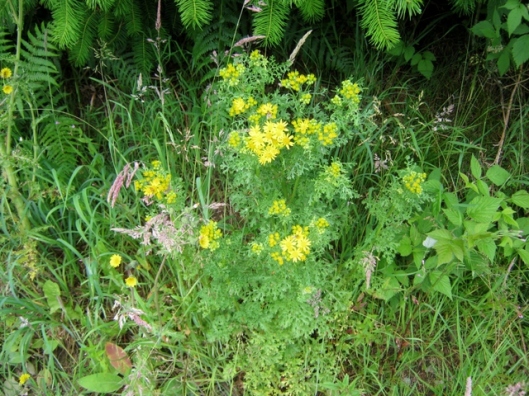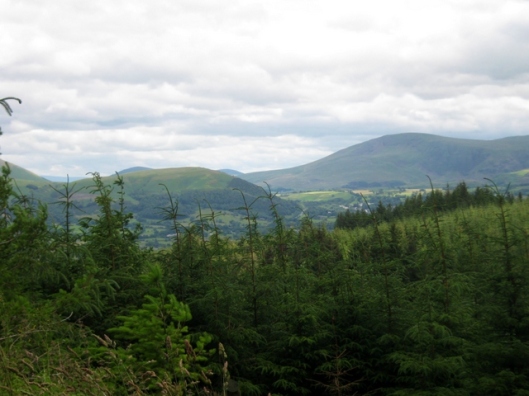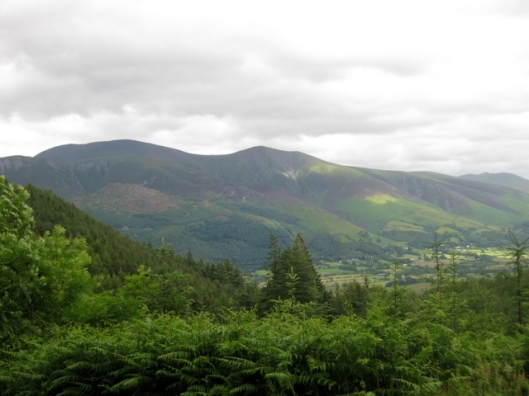Tags
Anastasia Moutsatsou, autumn, berries, Diary, insects, leaf colour, Mendham, October, plants, renovations, Sir Alfred Munnings, sunset, trees, weather
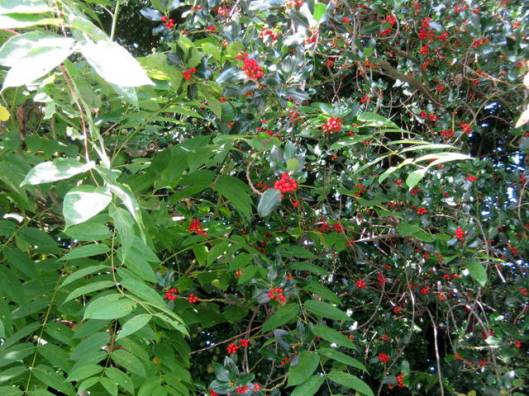
I saw these holly berries (Ilex aquifolium) in one of the carparks in Halesworth at the beginning of the month.
We have had a fair amount of cloud and rain this month and there was a week when the rest of the country was getting very pleasant weather while we in eastern East Anglia and also those in eastern Kent were having gloomy, wet weather with north-easterly winds. We have had a few slight frosts and some sunshine too – but not as much as we would have liked! For anyone who is interested in our weather here in the east of Britain – and why wouldn’t you be! – here is a link to the local BBC weather forecast.
The leaf-colour has been very beautiful but I haven’t been able to get out often to take photos. The leaves are falling fast now and the recent heavy rain and windy weather have stripped many trees of their leaves altogether.
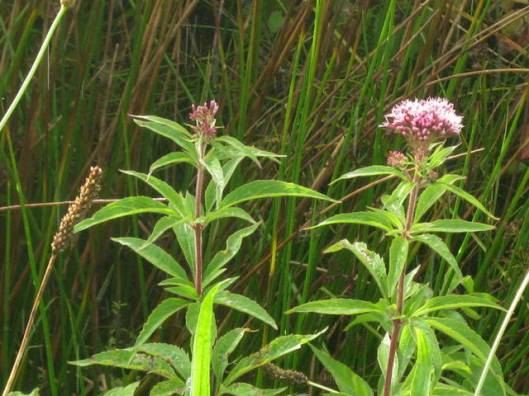
I was surprised to see some Hemp-agrimony (Eupatorium cannabinum) in flower in the ditch next to the maple tree. It usually flowers during late summer and all other Hemp-agrimony plants had already gone to seed.
Richard and I have been sharing driving Elinor to and from college and I have been feeling much less tired than I did when I was doing all the driving. The month has had its fair share of hospital, doctors’ surgery, optician and dentist visits. Every week this month one of us (at least!) has had an appointment or has had to take someone (my mother) to an appointment.
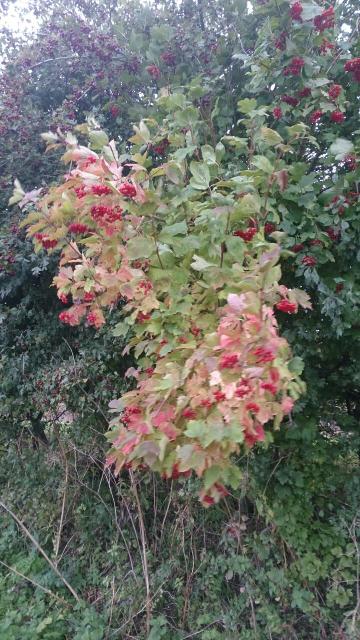
I mentioned to Richard that I had seen a beautiful Guelder-rose (Viburnum opulus) on my way to my mother’s house (yet again!) so he kindly photographed it for me with his phone when he walked past it on a breezy morning later in the week.
Elinor has had her half-term holiday this week. She has worked very hard during her first half-term and has had quite a lot of homework to do during this week. She has enjoyed the course so far and her tutors are very pleased with her and the standard of her work. This bodes very well. She is also working hard to overcome her anxiety and also the sleep-phobia that has returned to plague her nights.
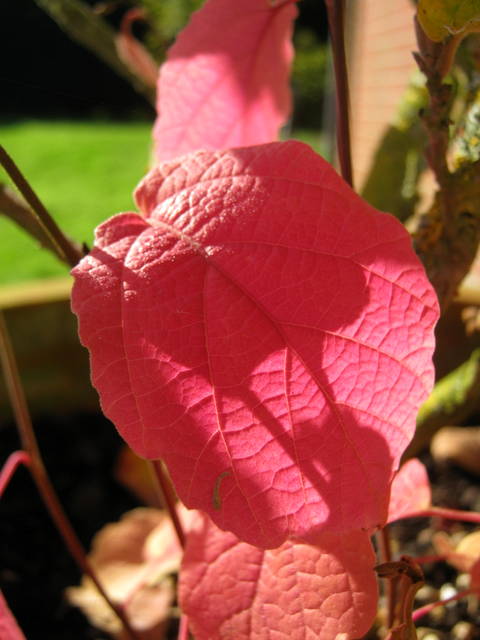
A Witch-hazel leaf. All the rest of the tree’s leaves were a buttery yellow but the leaves on the new shoots went red.
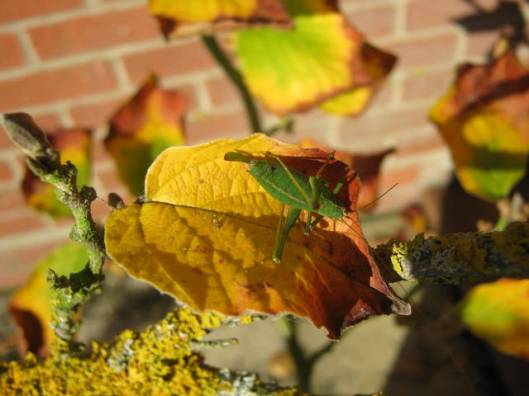
This Cricket, a female Speckled Bush-cricket (Leptophyes punctatissima) I believe, was sun-bathing while sitting on a yellow Witch-hazel leaf.
Alice seems well and is enjoying her new job but wishes she was able to work longer hours. She has to have her PhD thesis printed before she can take part in her graduation ceremony so is trying to save up enough money to get it done. She is coming home for the weekend in a fortnight and I am looking forward to it very much. To see her in action discussing horror films please watch the video on the following link.
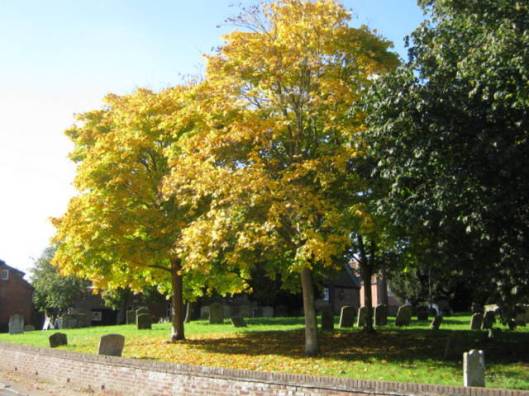
Fine trees on a fine day. The churchyard of St Mary’s church in Halesworth. Whenever I see this wall I remember the times I have held one or other of my daughters’ hands when they were little as they balanced all the way along it. It used to take ages! Alice was especially keen.
Richard and I are starting to compile the list of improvements and repairs we need to do to the house and garden. One of the first jobs will be to replace most of the windows and we hope to get this done before Christmas. We are also getting a gardener/landscaper to clear and dig out the front ditch which has become overgrown and blocked. We have asked him to cut the hedges too. This will be done in a fortnight’s time.
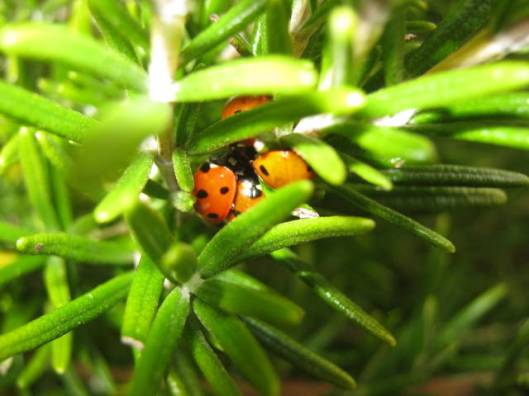
I found these ladybirds sheltering in my Rosemary bush next to the front door. I think they were hoping to hibernate there. We have since had some very wet weather and they are no longer there.
Last winter we had no ladybirds hibernating in the corner of the window in our bedroom. This year, when we hope to replace the windows in a few weeks time, the ladybirds are back! I will have to think of a way of gently moving them before the windows are removed. I don’t know if they will be as interested in the new poly-carbonate windows we are to have, as they are in the old wooden ones with ladybird pheromones on!
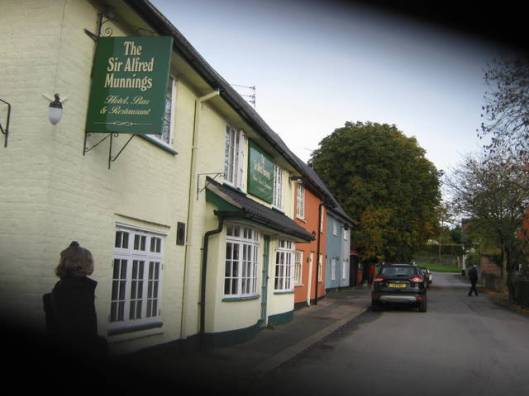
Last Sunday we went out for lunch to The Sir Alfred Munnings in Mendham. (I don’t know what the black shadows are top right and bottom left of the photo).
The artist Sir Alfred Munnings was born in Mendham in 1878 and this restaurant and bar was re-named after him.
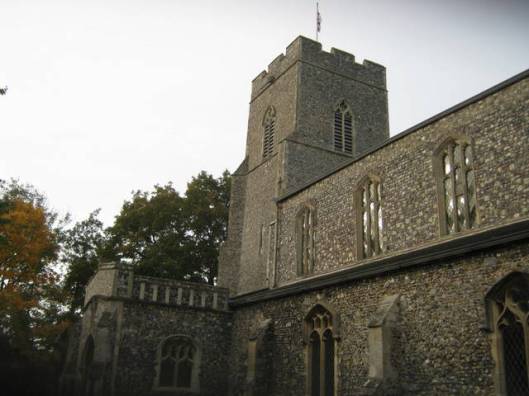
Mendham church is quite large and well looked after. I couldn’t get far enough away from it to get the whole of the church in one photo.
Here is one of my favourite songs – ‘Ola Ta Diskola’ (All the Difficulties) by Anastasia Moutsatsou.
Thanks for visiting!

